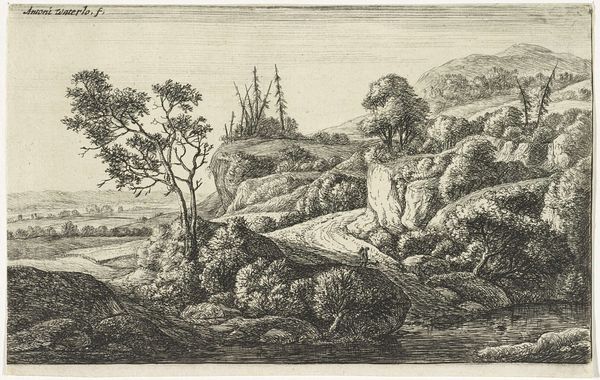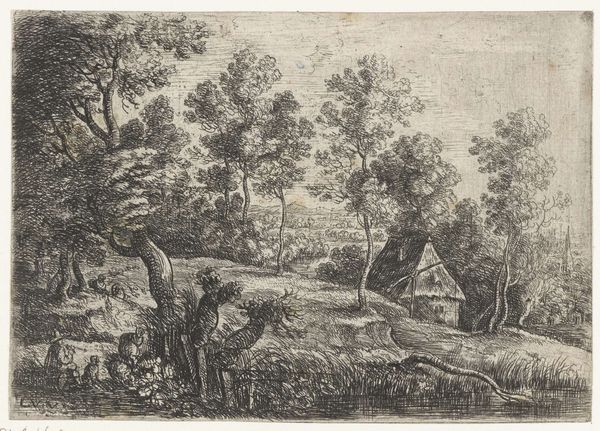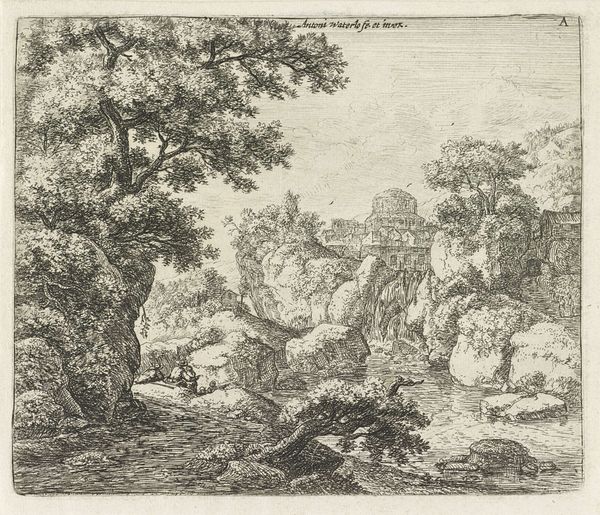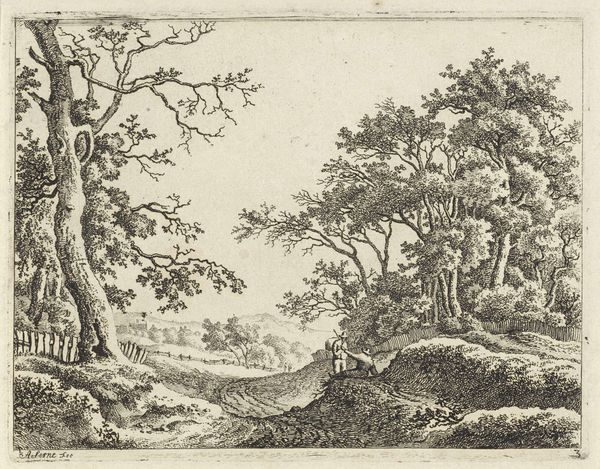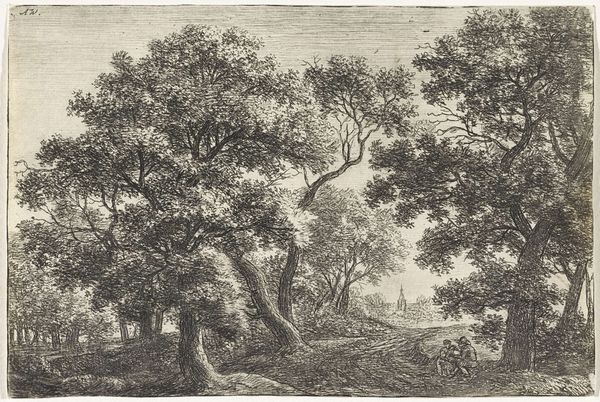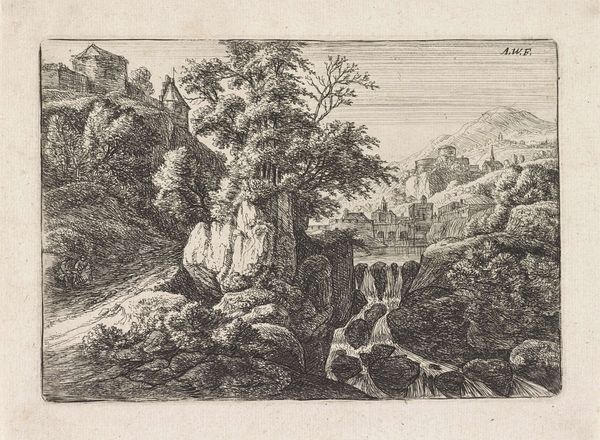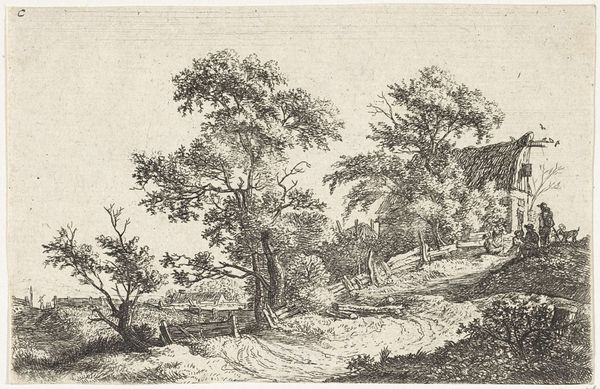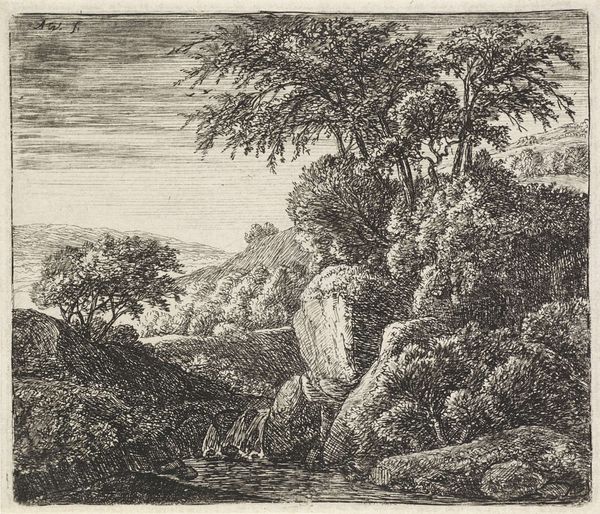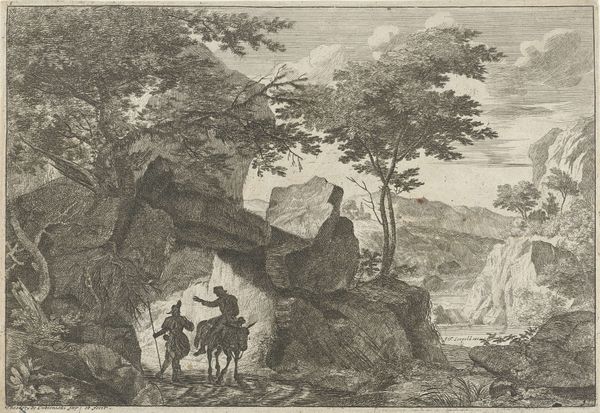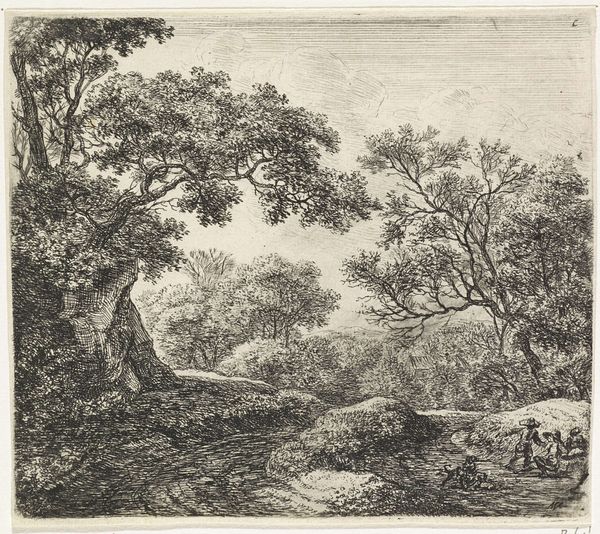
drawing, print, etching, paper
#
drawing
#
pen drawing
#
dutch-golden-age
# print
#
etching
#
landscape
#
paper
Dimensions: height 134 mm, width 158 mm
Copyright: Rijks Museum: Open Domain
Curator: Immediately, my attention is grabbed by the sheer intricacy. Look at how those fine lines define the entire composition, the delicate details giving a depth to what is, at its core, a black and white scene. Editor: Indeed. The Rijksmuseum houses this print, an etching titled "Herder op een hellende brug," which translates to "Shepherd on a Sloping Bridge," attributed to Anthonie Waterloo. Though the precise date is uncertain, it likely falls between 1630 and 1676, marking it as a piece from the Dutch Golden Age. Curator: What I find interesting is how the bridge becomes this precarious line, dividing and joining at once, connecting human activity with raw nature. You can almost feel the fragility of the passage. It begs the question: What resources were needed, and what sort of social structures allowed for building the depicted world? Editor: From a purely formal perspective, the use of diagonal lines creates tension; the bridge is obviously the central element in this landscape, but the slope unnerves. Notice how Waterloo used the pen to model trees and rocks in deep blacks in stark contrast to the paler sky above; he directs our view into and across the image by how skillfully he modeled depth and form. Curator: And who crosses this bridge, and to what ends? Consider the labor it took not only to construct the bridge but to traverse it. Is it a path of necessity, part of everyday rural life, or something more symbolic—a passage, maybe even fraught with religious significance, indicated perhaps by the cross being carried by the figure on the bridge? The distribution of this print would be determined by markets in printselling shops; understanding the movement of materials sheds more light on what this image would mean to its audiences. Editor: Undoubtedly. By understanding Waterloo's technique, especially his unique treatment of line and light, we get a better sense of the narrative—or at least one potential narrative of labor, passage and place that is being enacted here. Look again at how the details guide the gaze, making it circle the scenery. Curator: Right. Viewing the etching like this, we recognize how material conditions of its production affected not only its physical properties but its circulation and significance. These contextual layers broaden its meaning beyond that of a singular artist’s isolated expression. Editor: Exactly, it also teaches us about composition, perspective, and the enduring qualities of nature replicated through this image as the subject. This duality adds depth, certainly enriching how we read Waterloo’s sloping bridge.
Comments
No comments
Be the first to comment and join the conversation on the ultimate creative platform.

